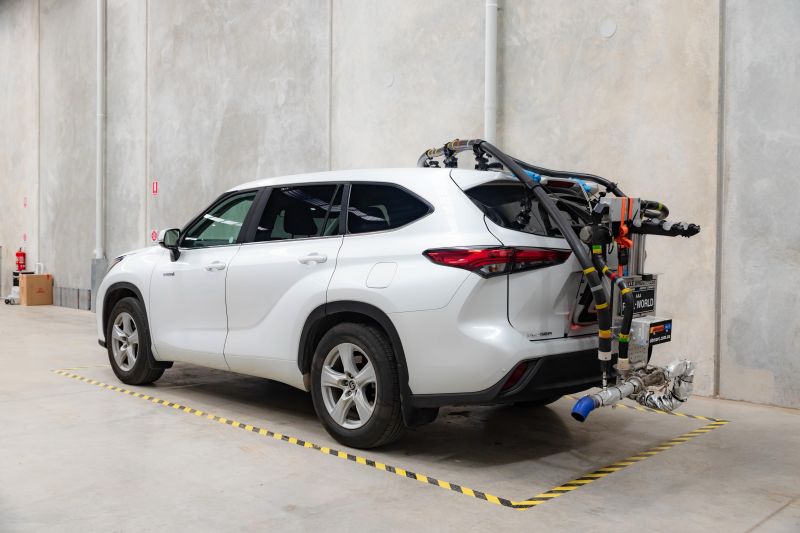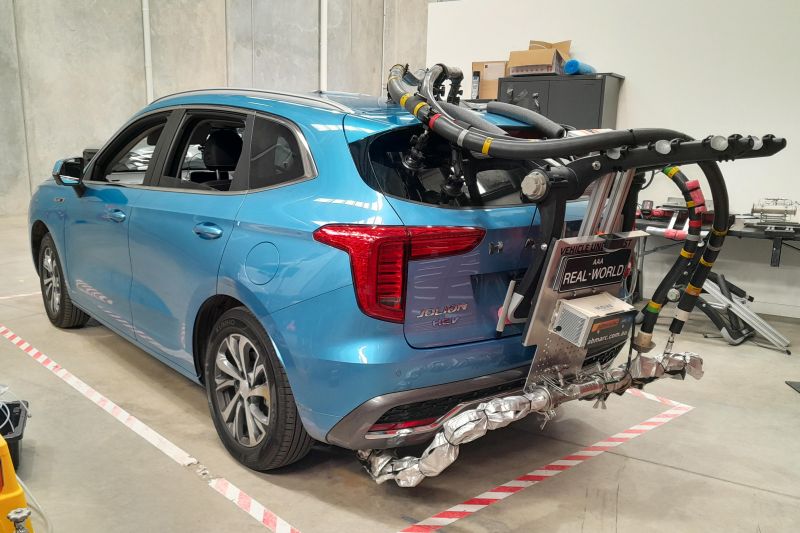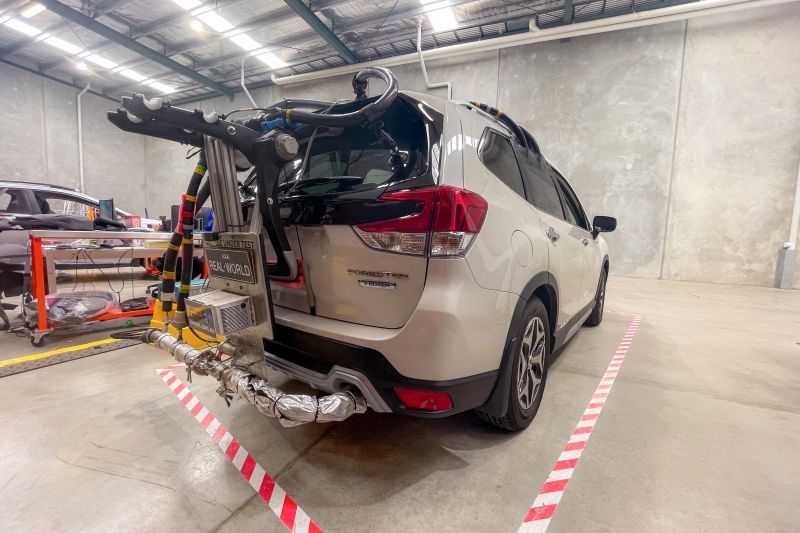Hybrid vehicles have come a long way in the past three decades, but not all models on sale provide the fuel savings motorists would hope for.
That’s the claim being made by the Australian Automobile Association (AAA), which has published the results of the latest round of its Real-World Testing Program.
While previous rounds have compared vehicles to their official fuel consumption claims, the AAA has now compared the fuel saving claims of hybrids and their petrol-only counterparts.
In addition to looking at the fuel consumption of hybrid and petrol models in its real-world tests, the peak body for Australia’s state-based motoring clubs also compared these results to the official claims, which are compiled on the government’s Green Vehicle Guide.
Its latest testing included traditional hybrid vehicles – Toyota’s RAV4, Corolla, Camry and Kluger, plus the GWM Haval Jolion and Honda CR-V – as well as two mild-hybrids in the Subaru Forester and Suzuki Swift.
The AAA’s real-world testing showed three of Toyota’s four hybrid models (Corolla, Camry and Kluger) consumed in excess of 30 per cent less fuel compared to petrol-only versions, while the RAV4 Hybrid used 29.4 per cent less.
However, only the RAV4 and Corolla beat the comparative lab test fuel savings in the real world, while there was less of a fuel consumption disparity between petrol and hybrid Camrys and Klugers in the AAA test compared to the lab test.
Note that you can no longer buy non-hybrid versions of these four Toyota models, as the carmaker axed petrol-only variants last year due to overwhelming demand for electrified powertrains – in excess of 90 per cent for certain nameplates.
The AAA also found the Honda CR-V hybrid used 23.5 per cent less fuel than its petrol-only sibling in the real world, against a lab test difference of 22.5 per cent. A hybrid powertrain is only available in the top-spec CR-V RS, which costs $2400 more than the flagship petrol VTi LX.
Despite offering fuel savings compared to petrol examples, the petrol-electric GWM Haval Jolion had the largest difference between its real-world and lab test figures.
In the lab, the hybrid uses 38.3 per cent less fuel than the petrol model, but in the AAA’s tests the gulf was just 16.5 per cent.
The GWM hybrid costs $5000 to $8000 more than its petrol-only equivalent.
However, the poor performer of the models tested was the Subaru Forester, with its mild-hybrid powertrain actually found to consume more fuel than the petrol-only model.
In real-world AAA testing, the mild-hybrid Forester used 2.8 per cent more fuel, compared to a 9.5 per cent saving in the lab tests.
The AAA noted this test was conducted on the outgoing Forester, as a new-generation Forester with a Toyota-style hybrid system is on the way and expected to offer greater fuel savings.
Finally, the Suzuki Swift – which has a 12-volt mild-hybrid system – was able to use 17.5 per cent less fuel in the real-world test than its petrol counterpart, a result which bettered the full-hybrid Jolion.
Suzuki no longer sells a hybrid-less Swift, having moved from a four- to a three-cylinder engine in its latest generation.
“Our Program continues to show that lab test results on the windscreens of new cars can differ significantly from real-world performance, and cost-focused consumers should do their research before spending their money,” AAA managing director Michael Bradley said in a media statement.
“New cars rarely achieve real-world consumption equal to lab results, and Australian families and fleet buyers can now see how cars perform on Australian roads, and what their respective running costs will be.”
All of the AAA’s real-world road testing is conducted on a 93km loop in and around Geelong. Testing protocols are based on European Union legislation but developed for Australia with consultation between the peak group and local regulators and industry.
The AAA has not yet released testing results for EVs, which are due to be put to the test this year.
Hybrid versus petrol fuel consumption results
| Model | AAA real-world testing fuel use vs petrol-only (L/100km) | AAA real-world testing fuel use vs petrol-only (percentage) | Lab test fuel use vs petrol-only (L/100km) | Lab test fuel use vs petrol-only (percentage) |
|---|---|---|---|---|
| Toyota RAV4 hybrid | -2.0 | -29.4% | -1.3 | -21.7% |
| Toyota Corolla hybrid | -2.0 | -32.3% | -1.8 | -30.0% |
| Toyota Camry hybrid | -2.2 | -32.4% | -2.6 | -38.2% |
| Toyota Kluger hybrid | -2.7 | -31.8% | -2.7 | -32.5% |
| GWM Haval Jolion hybrid | -1.3 | -16.5% | -3.1 | -38.3% |
| Honda CR-V hybrid | -1.9 | -23.5% | -1.6 | -22.5% |
| Subaru Forester mild-hybrid | +0.2 | +2.8% | -0.7 | -9.5% |
| Suzuki Swift mild-hybrid | -1.1 | -17.5% | -0.8 | -16.7% |
MORE: Popular Australian models found to use up to 35 per cent more fuel than claimed
MORE: New data shows even more new cars are thirstier and dirtier than claimed
MORE: Real-world tests reveal the cars that are thirstier than they claim
MORE: The popular cars, SUVs and utes that can’t match their fuel economy claims
MORE: Real-world fuel use shows popular Australian new cars drastically exceed claims
MORE: Which SUVs don’t match their fuel economy stickers in the real world?
MORE: More realistic fuel efficiency testing now underway in Australia





